Incorporating Japanese style home design into your space is an excellent way to embrace simplicity, tranquility, and a deep connection with the natural world. Renowned for its minimalist aesthetics, fluid functionality, and respect for materials, Japanese style has gained significant global attention. If you’re captivated by this serene and sophisticated design ethos, here are seven insightful tips to infuse Japanese style into your home design seamlessly.
Embracing Minimalism in Japanese Style Home Design



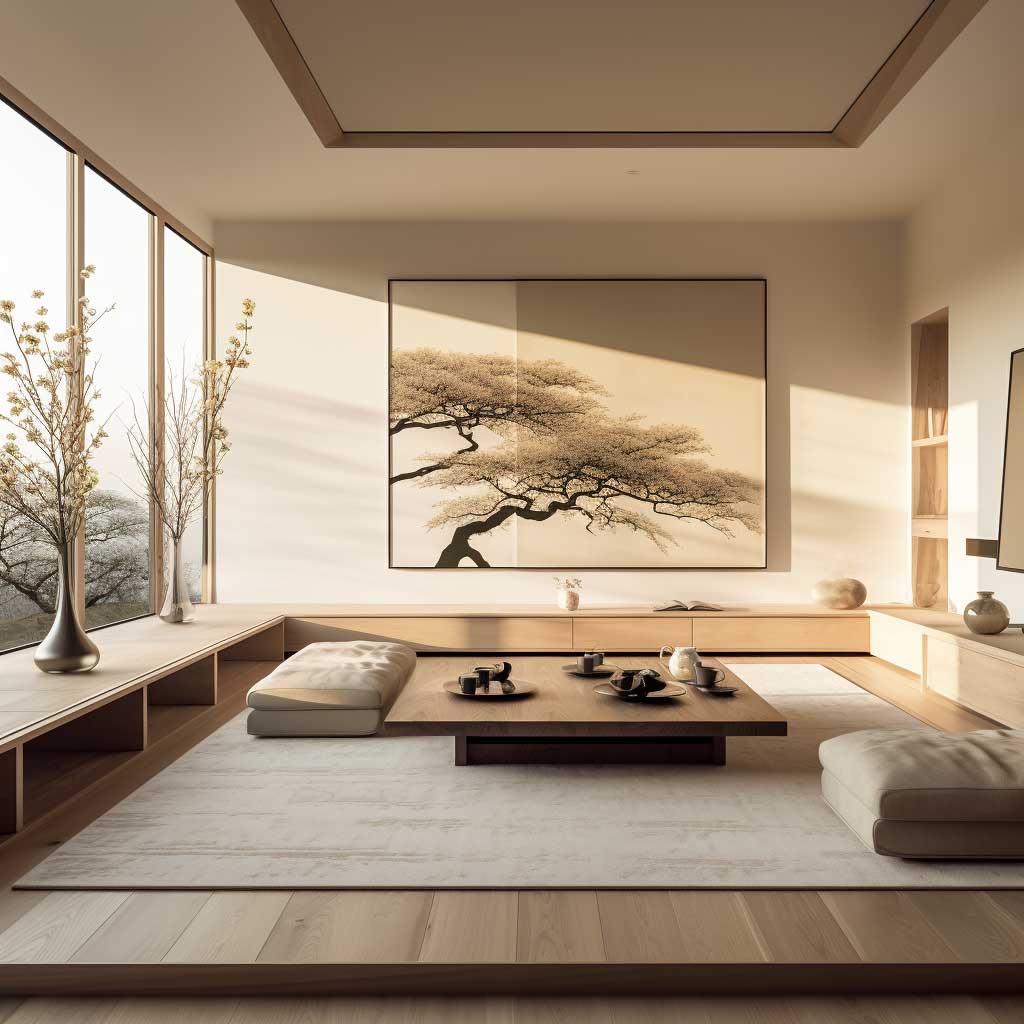
This photograph showcases a living room that embodies the core principle of Japanese style home design: minimalism. This space exudes an air of tranquility and order, largely attributable to the pared-down furniture, muted color scheme, and clean lines that characterize Japanese minimalism.
The simplicity of the room’s layout and its uncluttered nature are central to creating a serene, calm atmosphere. Every piece of furniture serves a purpose, eliminating unnecessary clutter and allowing the room’s beauty to shine through its functionality.
A key feature of Japanese style home design highlighted in the image is the use of natural materials. The wooden furniture, from the low table to the floor chair, celebrates the beauty of the material in its most natural form. The visible grain and warm tone of the wood echo a sense of authenticity and closeness to nature that is quintessentially Japanese.
The room also incorporates an element of Zen philosophy, which permeates Japanese design principles. This is evident in the simple but beautiful plant arrangement that injects a burst of natural greenery into the space. This integration of nature is an effort to create balance and harmony within the room.
The Japanese concept of ‘Ma’ or negative space is also evident in this living room design. By allowing certain areas of the room to remain empty, the design respects the balance between occupied and unoccupied space, resulting in a sense of peace and openness.
Another intriguing feature is the ‘Shoji’ screens used in place of conventional doors and windows. Made of translucent paper within a wooden frame, these screens allow for privacy while still enabling light to filter in, creating a soft, diffused illumination.
Lastly, the use of a neutral color palette, mostly composed of earthy tones, aids in establishing a tranquil, grounding atmosphere. It complements the natural elements present in the space and further enhances the minimalist approach to Japanese style home design.
Incorporating Nature into Japanese Style Home Design

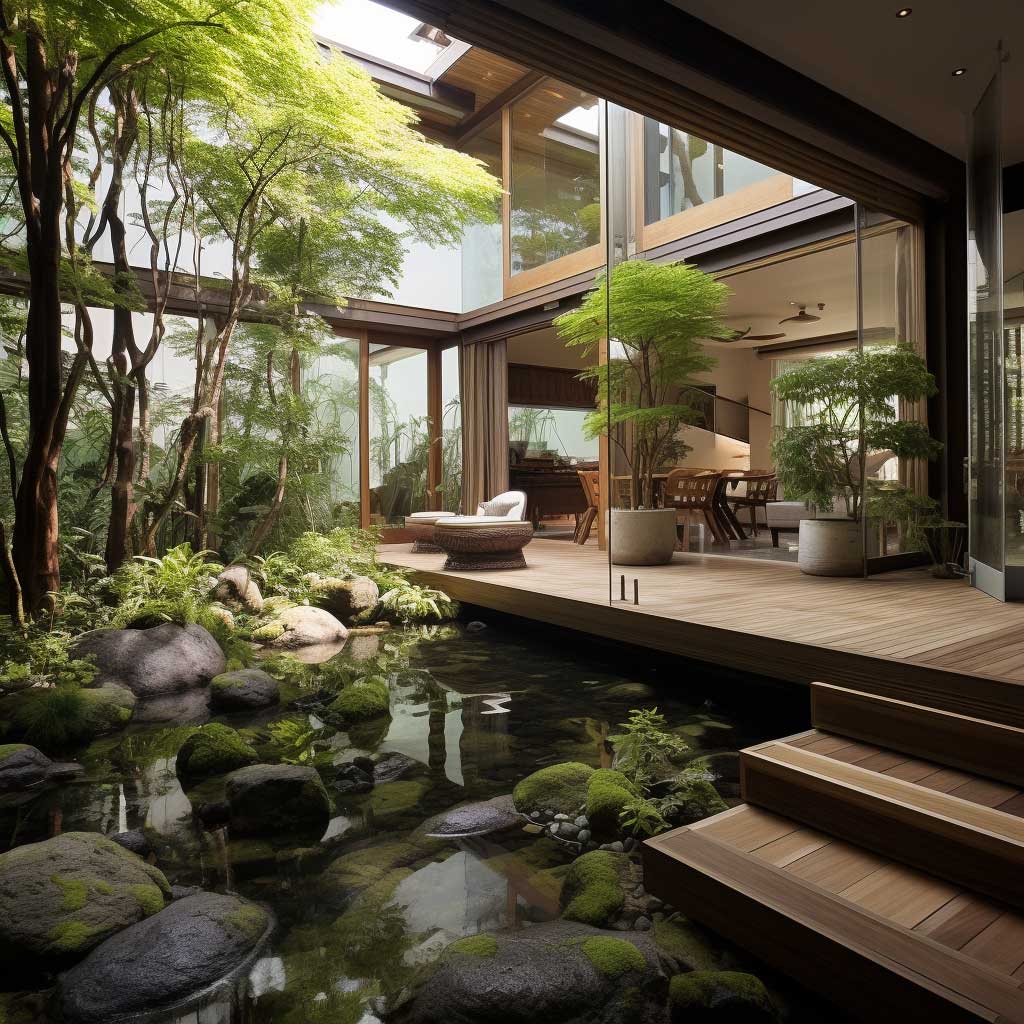
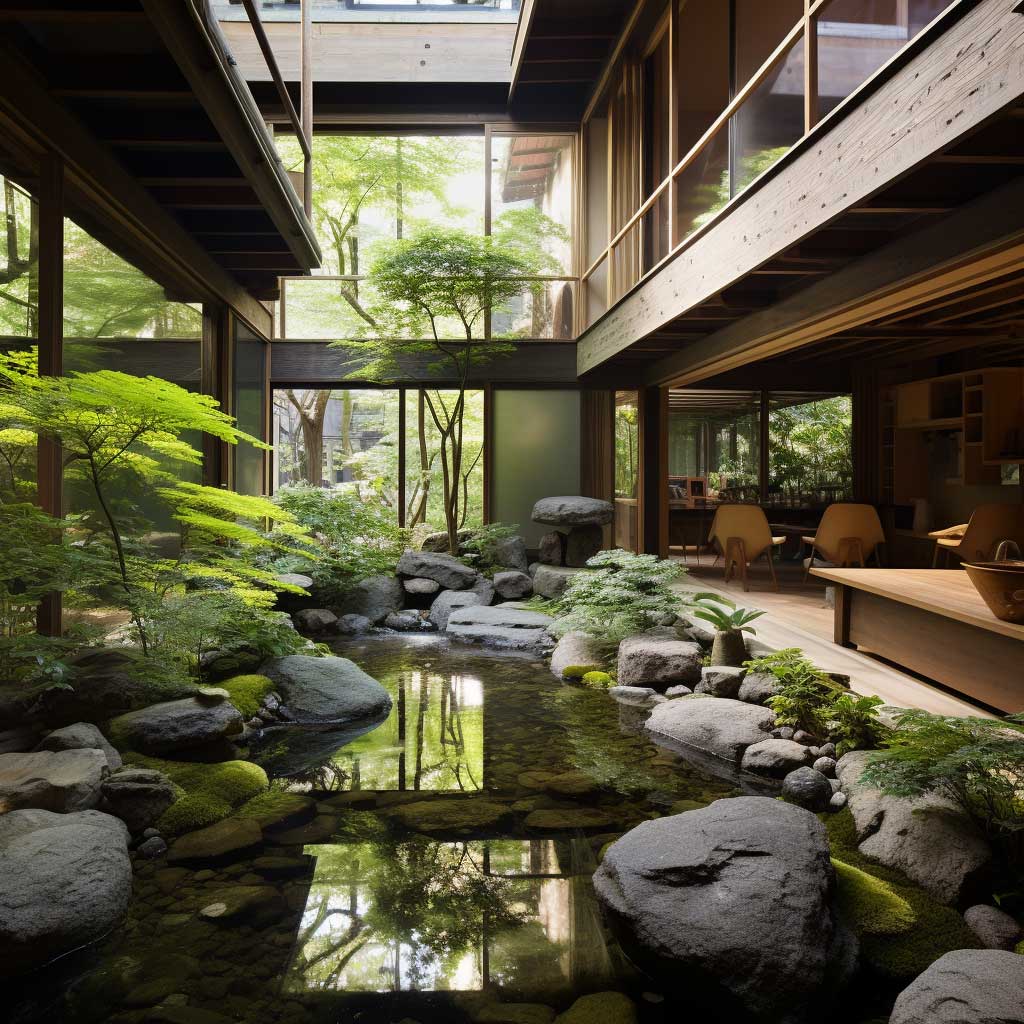
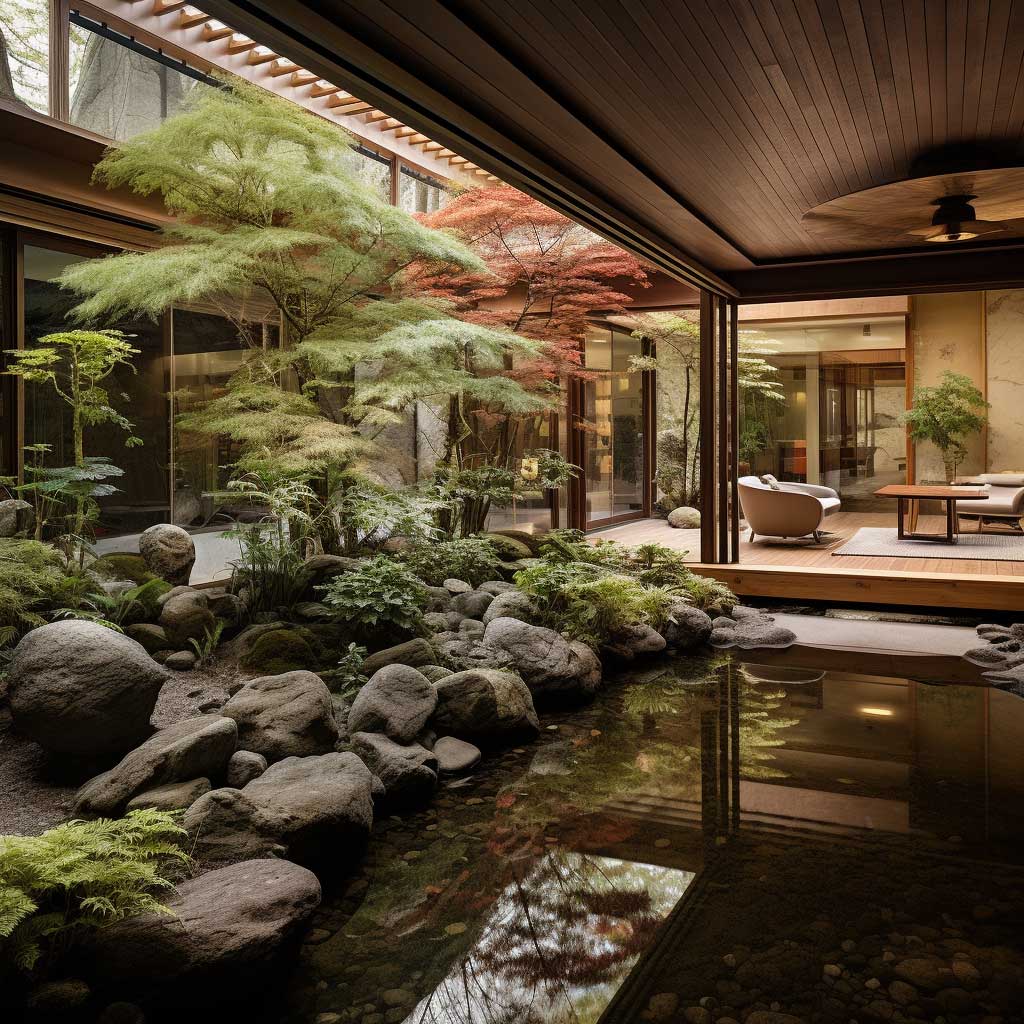
The image captures a breathtaking indoor garden, a hallmark of Japanese style home design. The garden encapsulates the profound connection between Japanese design and nature, showcasing how this relationship can be gracefully integrated into interior spaces.
An aspect of Japanese style home design visible in this photograph is the careful selection and placement of plants. These are not randomly chosen but are curated to create an intentional, harmonious blend of various textures, shapes, and colors. Each plant contributes to the overall composition, mirroring the principles of a traditional Japanese garden.
The garden is strategically located near large windows, ensuring that it receives ample natural light. The play of light and shadow throughout the day not only enhances the garden’s aesthetic appeal but also aids in the growth of the plants. This design feature speaks to the deep respect for nature intrinsic to Japanese style home design.
A striking attribute of the garden is its minimalist approach. Instead of overwhelming the space with an assortment of plants, the design respects the idea of ‘Ma’, the balance of empty and occupied space. This restraint highlights the individual beauty of each plant and promotes a serene, calming atmosphere.
Interestingly, the garden is not isolated but blends seamlessly with the rest of the indoor space. The boundary between indoors and outdoors is blurred, creating a sense of continuity and extending the living space into nature.
A subtle but essential feature is the incorporation of rocks within the garden. This is inspired by ‘Karesansui’, or Japanese rock gardens, reflecting the importance of balance and harmony in nature.
Lastly, the simplicity of the surrounding architecture—characterized by sleek lines and natural materials—serves as a complementary backdrop to the garden. It allows the focus to remain on the greenery, reaffirming the prominence of nature in Japanese style home design.
Simplicity and Functionality in Japanese Style Home Design
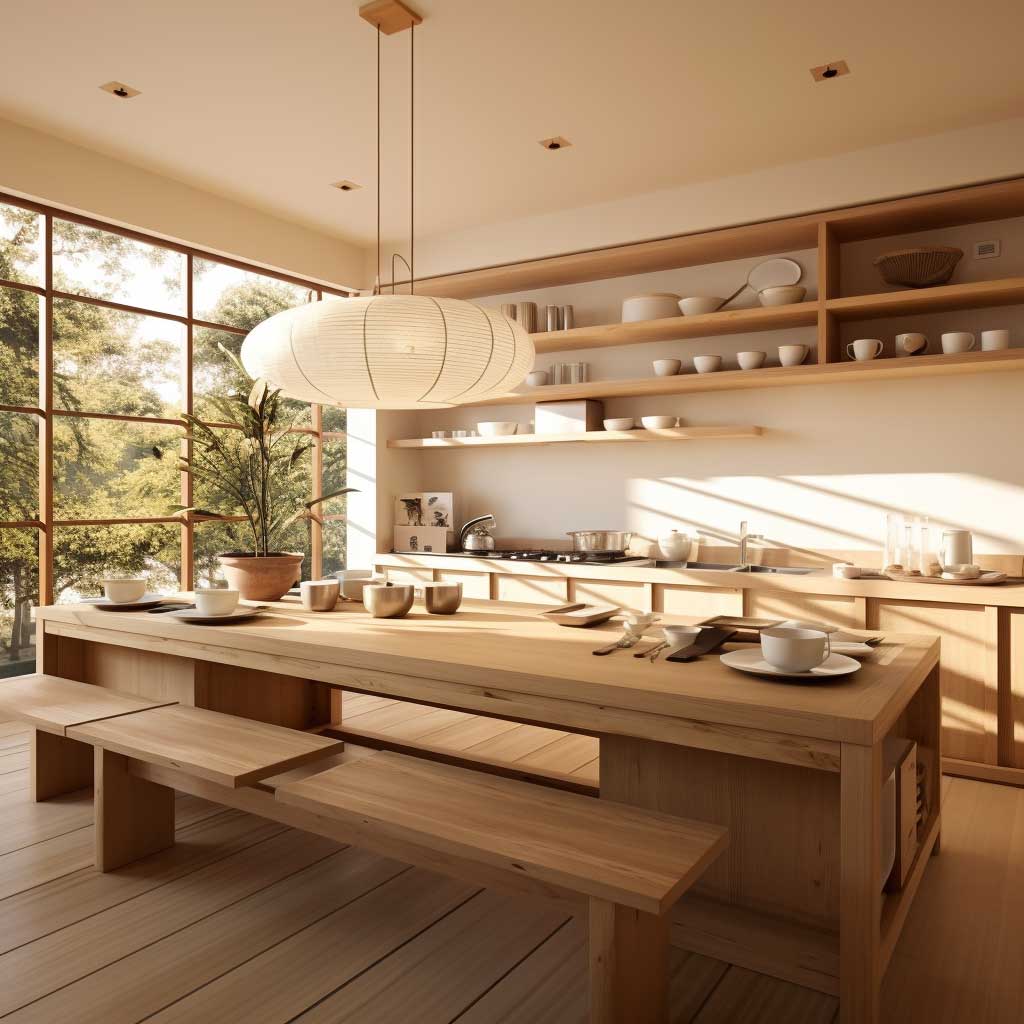
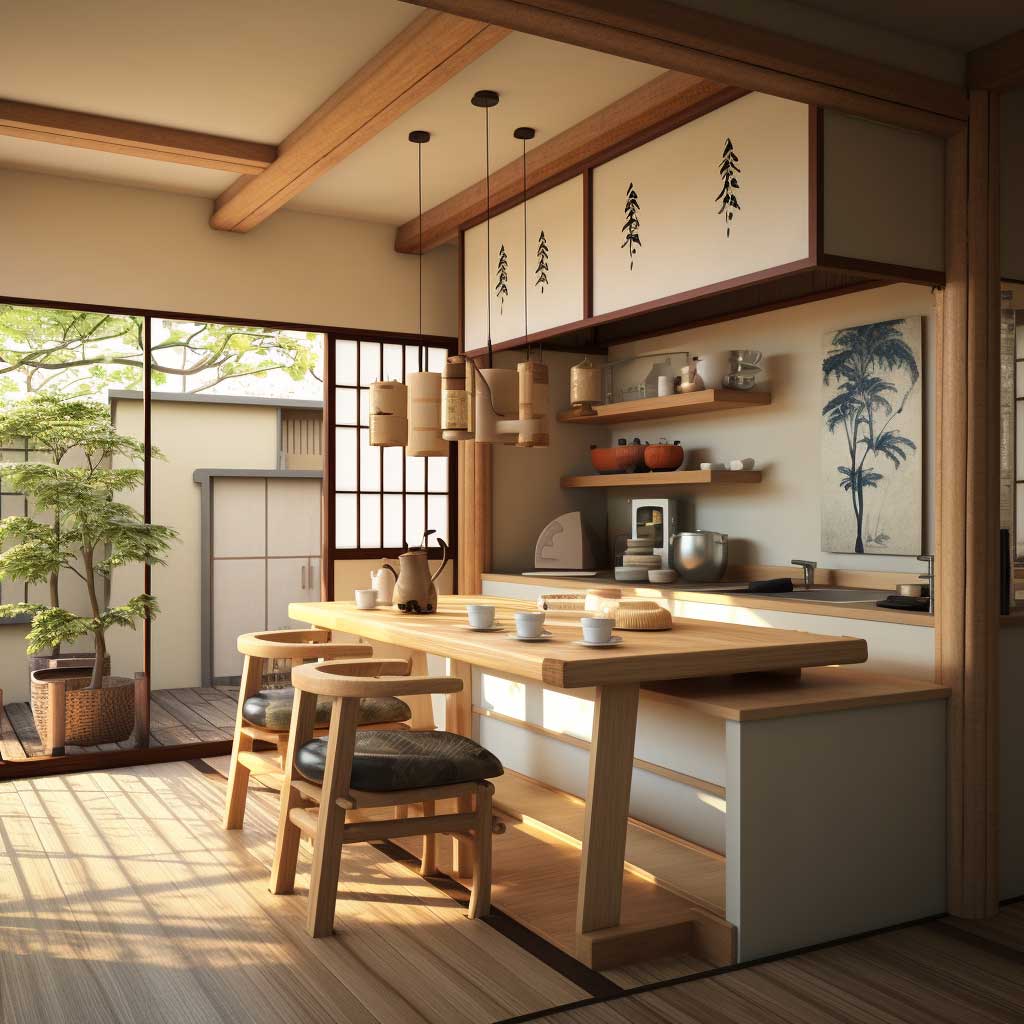
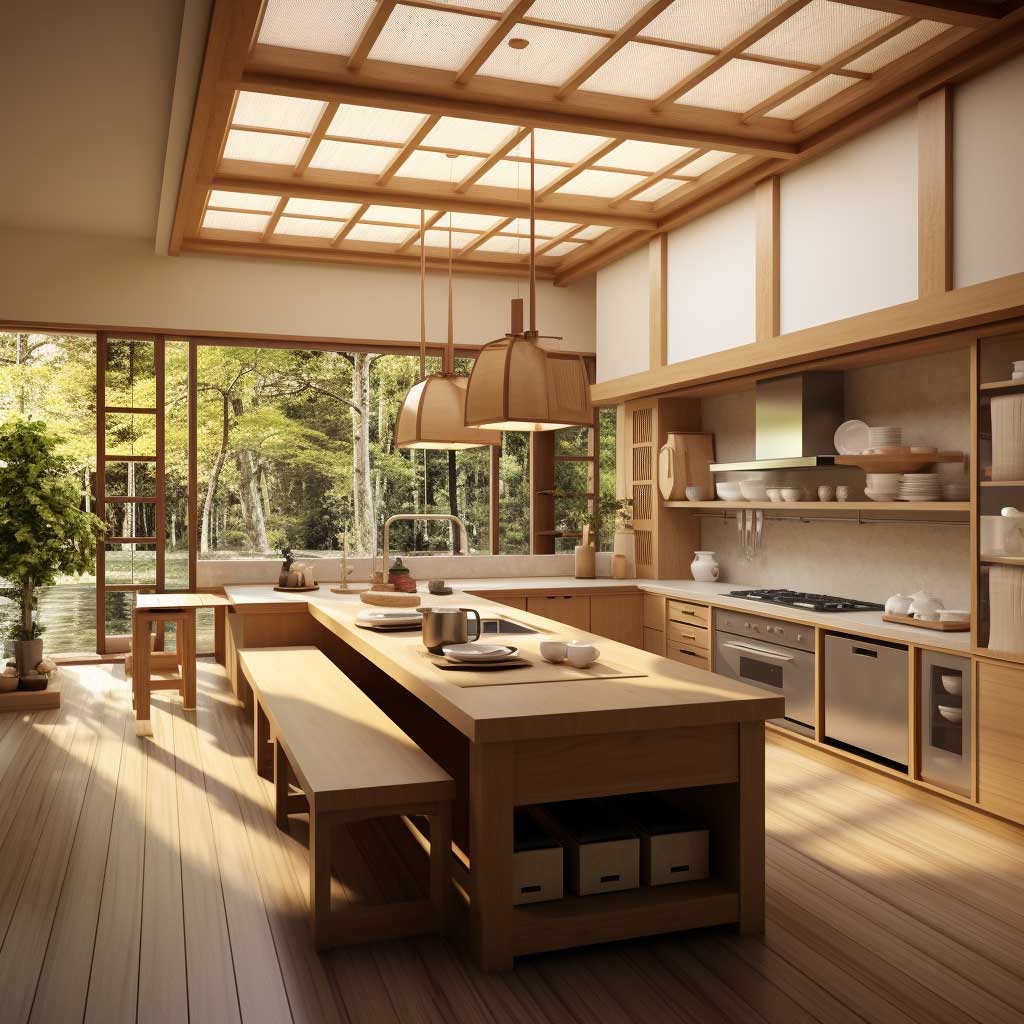
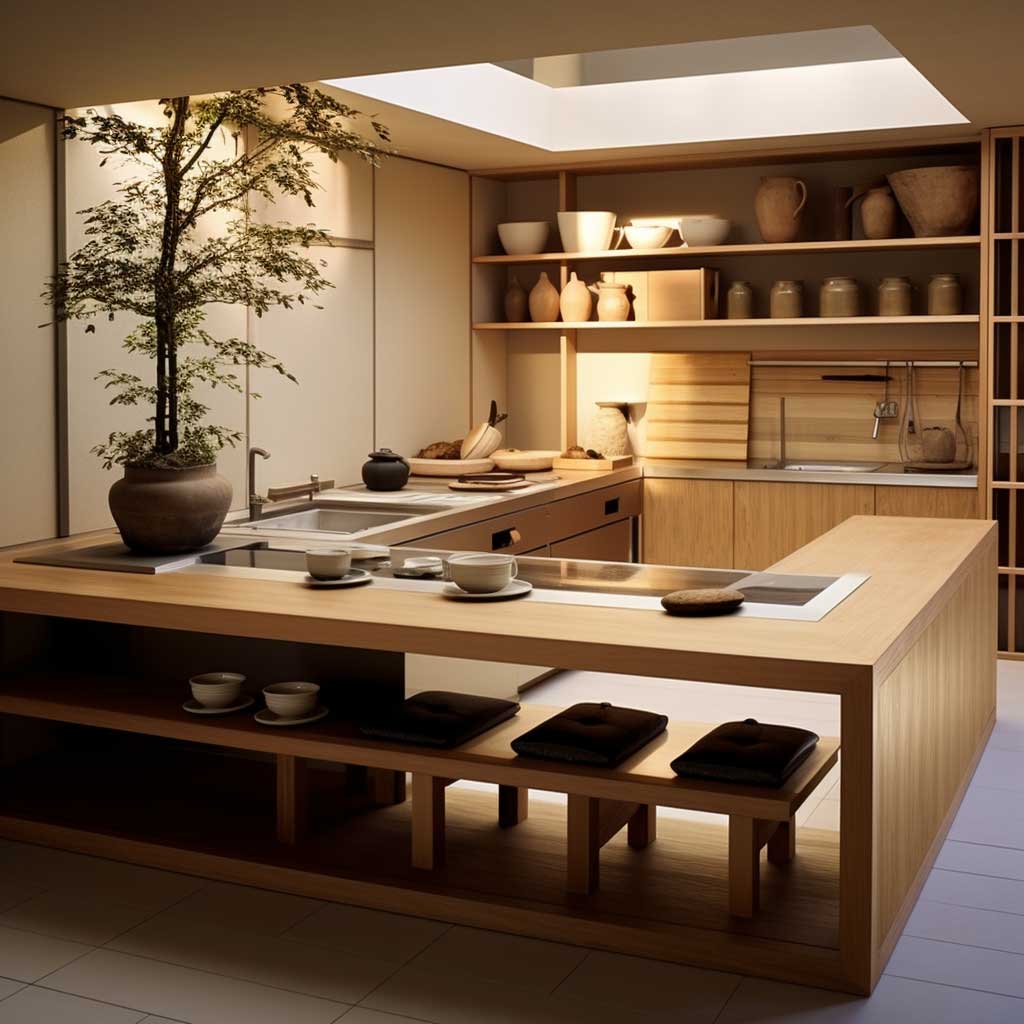
This image showcases a kitchen that exemplifies two crucial tenets of Japanese style home design—simplicity and functionality. The design skilfully manages to balance both these elements, providing an efficient workspace while maintaining an aesthetic appeal.
The kitchen layout follows a minimalist approach. Unnecessary elements are omitted, and everything in sight serves a purpose. The simplicity of the design ensures that the focus remains on the functionality of the space.
Notably, the kitchen incorporates a generous amount of natural materials, a distinctive feature of Japanese style home design. The wooden cabinets and countertops introduce warmth and texture to the space, emphasizing the organic beauty inherent in these materials.
Every aspect of the design has been thought through for optimal functionality. For example, the open shelves allow easy access to dishes, while the pull-out drawers provide additional storage, demonstrating a practical understanding of the room’s purpose.
The design embraces the concept of ‘Wabi-Sabi’—the acceptance of transience and imperfection. This is evident in the slightly worn finish of the wooden elements, signifying a respect for materials in their most authentic form.
Despite the kitchen’s minimal aesthetic, it does not feel sterile or cold. This is partly due to the strategic use of warm lighting, which creates a cozy, inviting atmosphere in the space.
Lastly, the design maintains a streamlined look by using appliances that blend seamlessly with the rest of the kitchen’s aesthetics. This attention to detail is a testament to the holistic approach of Japanese style home design, where every element of a room is considered part of the whole.
Conclusion
Implementing Japanese style home design can transform your living space into a serene haven that embodies simplicity, functionality, and a profound connection with nature. Whether it’s through embracing minimalism, incorporating nature indoors, or focusing on simplicity and functionality, this design philosophy offers a refreshing departure from the clutter and chaos of modern living. By integrating these tips into your home design, you’ll not only enhance your living environment aesthetically but also enrich it with the tranquility and balance intrinsic to Japanese culture and lifestyle.












